Florida Frontiers: The Weekly Newspaper Articles of the Florida Historical Society is a weekly newspaper article covering history-based events, exhibitions, activities, places and people in Florida. The newspaper articles premiered in January 2014. We explore the relevance of Florida history to contemporary society and promote awareness of heritage and culture tourism options in the state.
 Nearly a year ago, hurricane Irma swept through Brevard County. The day after the storm, September 11, 2017, Rockledge photographer and archaeology enthusiast Randy Lathrop, also known as Randy Shots, discovered that the hurricane had dislodged an historic canoe and washed it ashore from the Indian River in Cocoa. The 15 foot, 700 pound canoe captured the public’s imagination. The story made the...
Nearly a year ago, hurricane Irma swept through Brevard County. The day after the storm, September 11, 2017, Rockledge photographer and archaeology enthusiast Randy Lathrop, also known as Randy Shots, discovered that the hurricane had dislodged an historic canoe and washed it ashore from the Indian River in Cocoa. The 15 foot, 700 pound canoe captured the public’s imagination. The story made the...
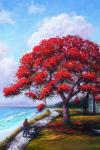 Over the past few decades, the mid-twentieth century paintings by a group known as the Highwaymen have become some of the most popular artwork produced in Florida. The new exhibit “Paintings of Nostalgic Florida: The Original Highwaymen Artists” is on display at the Brevard Museum of History and Natural Science April 6—28. The opening reception on Friday April 6 at 6:00pm features wine, heavy hors...
Over the past few decades, the mid-twentieth century paintings by a group known as the Highwaymen have become some of the most popular artwork produced in Florida. The new exhibit “Paintings of Nostalgic Florida: The Original Highwaymen Artists” is on display at the Brevard Museum of History and Natural Science April 6—28. The opening reception on Friday April 6 at 6:00pm features wine, heavy hors...
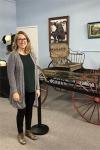 There are two temporary exhibits focusing on local history and culture currently on display at the Brevard Museum of History and Natural Science, 2201 Michigan Avenue, Cocoa. “Cocoa: A Hometown History” is on display through May 5, and “A Time to Shine: Mismatched Items from the Permanent Collection” can be seen through March 31. “We really want to explore the unique sides and aspects of the...
There are two temporary exhibits focusing on local history and culture currently on display at the Brevard Museum of History and Natural Science, 2201 Michigan Avenue, Cocoa. “Cocoa: A Hometown History” is on display through May 5, and “A Time to Shine: Mismatched Items from the Permanent Collection” can be seen through March 31. “We really want to explore the unique sides and aspects of the...
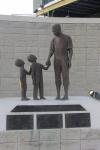 Kevin McCarthy has written several popular books focusing on African American history and culture in Florida. From 1969 to 2005, McCarthy taught at the University of Florida. He has written or edited 35 books, 30 of them about Florida. His books include “The Book Lover’s Guide to Florida,” “Florida Lighthouses,” “Thirty Florida Shipwrecks,” and “Twenty Florida Pirates.” Despite his diverse...
Kevin McCarthy has written several popular books focusing on African American history and culture in Florida. From 1969 to 2005, McCarthy taught at the University of Florida. He has written or edited 35 books, 30 of them about Florida. His books include “The Book Lover’s Guide to Florida,” “Florida Lighthouses,” “Thirty Florida Shipwrecks,” and “Twenty Florida Pirates.” Despite his diverse...
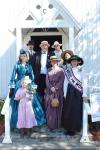 Touring an historic cemetery can be like visiting a museum. As you walk among the headstones, markers, and memorials, you can gain insight into the lives of individual pioneers, people who gave their lives in service to their country, and the lives of children cut tragically short. Guided, themed cemetery tours will be part of the seventh annual Pioneer Day to be held Saturday, February 10 th from...
Touring an historic cemetery can be like visiting a museum. As you walk among the headstones, markers, and memorials, you can gain insight into the lives of individual pioneers, people who gave their lives in service to their country, and the lives of children cut tragically short. Guided, themed cemetery tours will be part of the seventh annual Pioneer Day to be held Saturday, February 10 th from...
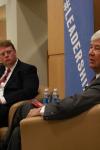 Senator Bob Graham and attorney Chris Hand, co-authors of the book “America, The Owner’s Manual: You Can Fight City Hall and Win,” participated in a panel discussion recently at the Zora Neale Hurston Festival of the Arts and Humanities in Eatonville. The topic was “Citizen Activism Works.” The panelists talked about effective ways that anyone with passion for a particular issue can make the...
Senator Bob Graham and attorney Chris Hand, co-authors of the book “America, The Owner’s Manual: You Can Fight City Hall and Win,” participated in a panel discussion recently at the Zora Neale Hurston Festival of the Arts and Humanities in Eatonville. The topic was “Citizen Activism Works.” The panelists talked about effective ways that anyone with passion for a particular issue can make the...
 The 29 th annual Zora Neale Hurston Festival of the Arts and Humanities is underway and continues through January 28. The event is presented by the Association to Preserve the Eatonville Community, and includes a series of presentations in a “Communities Conference” at Rollins College and in Eatonville. Presenters at this year’s event include poet Sonia Sanchez; producer, recording artist, and...
The 29 th annual Zora Neale Hurston Festival of the Arts and Humanities is underway and continues through January 28. The event is presented by the Association to Preserve the Eatonville Community, and includes a series of presentations in a “Communities Conference” at Rollins College and in Eatonville. Presenters at this year’s event include poet Sonia Sanchez; producer, recording artist, and...
 When you read the terms “digital history” or “digital humanities,” you might think of online access to scanned primary source documents such as journals, photographs, or maps. While that’s important, there’s much more to digital history. “We can interact with the public in a way we couldn’t before,” says Connie Lester, director of the RICHES Project in the public history program at the University...
When you read the terms “digital history” or “digital humanities,” you might think of online access to scanned primary source documents such as journals, photographs, or maps. While that’s important, there’s much more to digital history. “We can interact with the public in a way we couldn’t before,” says Connie Lester, director of the RICHES Project in the public history program at the University...